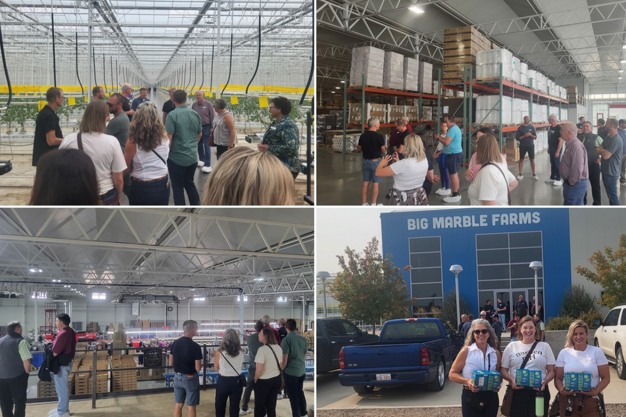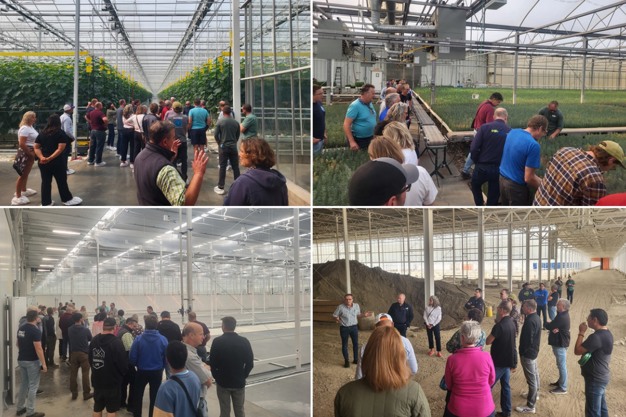The Alberta Greenhouse Growers Association (AGGA) recently celebrated 40 years of educating and representing ornamental, vegetable, tree seedling, and cannabis growers, as well as retailers. The board meets 5 times per year including their AGM. This happens virtually, and one time a year they meet in person. An area of the province is selected where they visit growers for a day. They have a casual dinner that night and the following day is the board meeting. This year's area was Medicine Hat and Redcliff, in the south-east of Alberta, Canada. Michiel Verheul, president of the AGGA elaborates on the latest AGGA tour and the Alberta industry.
Medicine Hat and Redcliff
Michiel gives some background information about the Medicine Hat and Redcliff area: "This area was developed in the early 1900s when natural gas was discovered. The city of Medicine Hat owns the gas and distributes it to consumers at a low rate. This drew and continues to draw industry including greenhouses. This is an area of the province that is 'desert-like' with some of the best light quality in the world, making it very attractive for growing vegetables and ornamentals. The weather is also much milder than the rest of the province due to a phenomenon called 'chinooks': a warm jetstream that can turn cold into above-seasonal temperatures. Summers are much longer and more intense here."
In the early 1960s, a cooperative was started where growers could ship vegetables (mostly cucumbers and tomatoes) to a packing house where they would be graded and sold. It's called Red Hat Co-op. Michiel: "Jump forward 60 years and the concept still works. It now includes eggplant, Okra lettuce and many types of cucumbers and tomatoes, and more. More recently, a large grower has absorbed the Red Hat Co-op into their product line called Big Marble farms and completed the Alberta-wide marketing brand with a partnership with Pik and Pak. This company is a packing co-op in the Lacombe (central Alberta) area."
 An impression of the day
An impression of the day
Discussing challenges – Labour and energy availability
The AGGA toured with 37 growers, the Red Hat Co-op, Big Marble farms, Bevo farms, and Chinook greenhouses. During each board meeting, they discussed the challenges. Michiel points out that labor is one of the topics of concern. "Just like any group in the world, we find ourselves in a labor crunch. We are greatly dependent on foreign labor. The Canadian government currently has a good foreign worker program that most of us use in all sectors of Canadian horticulture. Most are from Caribbean countries such as Mexico, Jamaica, the Philippines, Thailand, and Trinidad. This program is under continued pressure and as an industry we find ourselves fighting to maintain this essential program that has been ongoing since the early 1960s," Michiel explains.
 Some of the greenhouses toured by the AGGA
Some of the greenhouses toured by the AGGA
Another concern is the pricing and the availability of energy. Michiel elaborates: "There is constant pressure to reduce electricity and natural gas and replace them with alternative sources. In a province with a lot of natural resources, it's a struggle to find common ground. Growers are constantly exploring these options. Some work well like Cogen and partnerships with the energy sector. We have an active hand in research in the province, and long-time board member Dr Mohuyddin Mirza keeps us posted on any project."

Next year the AGGA plans to visit the Calgary area.
For more information:
Alberta Greenhouse Growers Association
www.agga.ca
